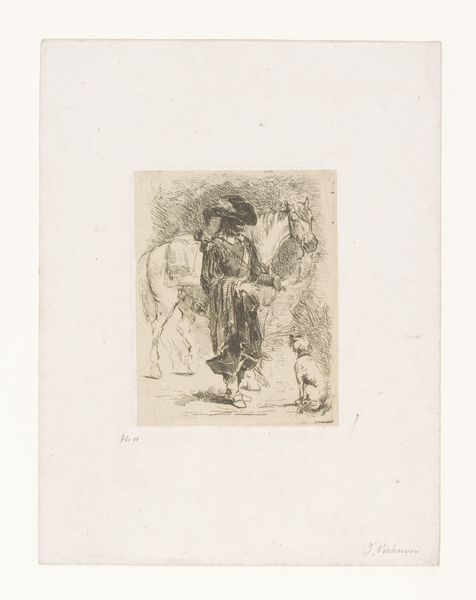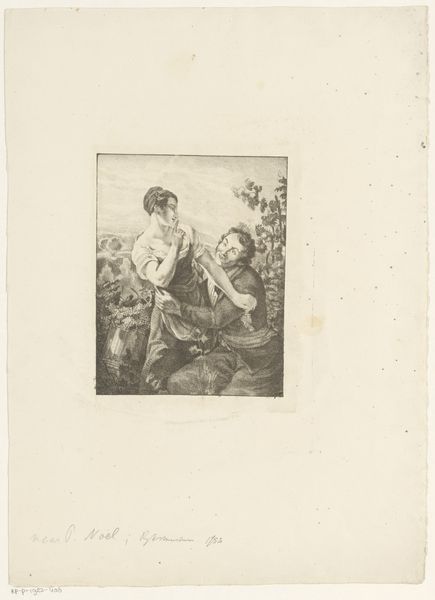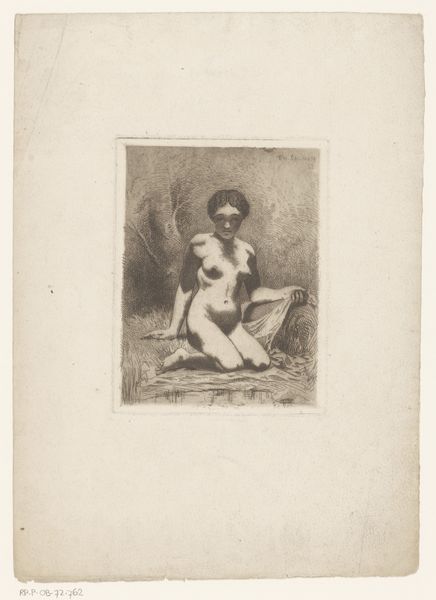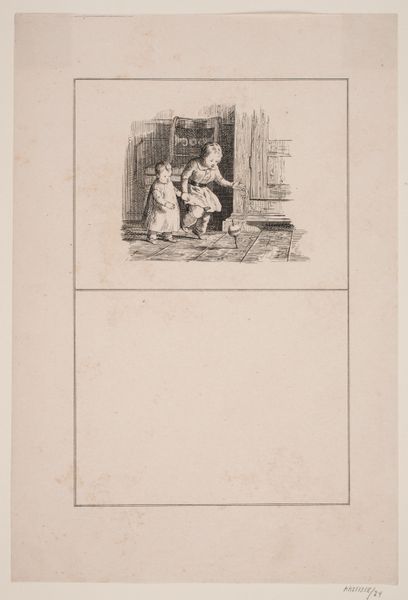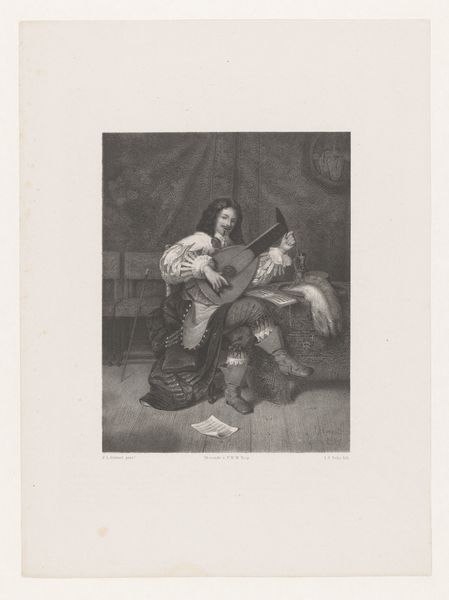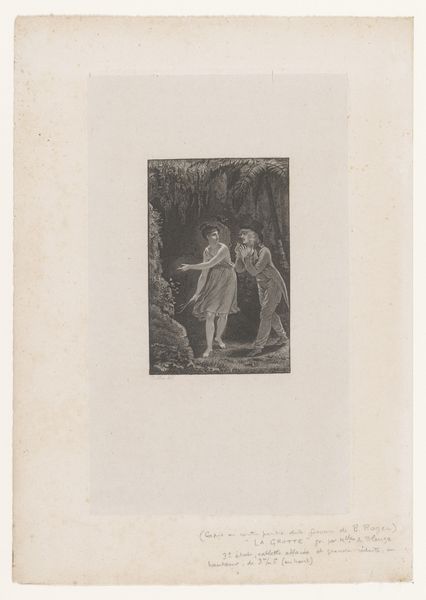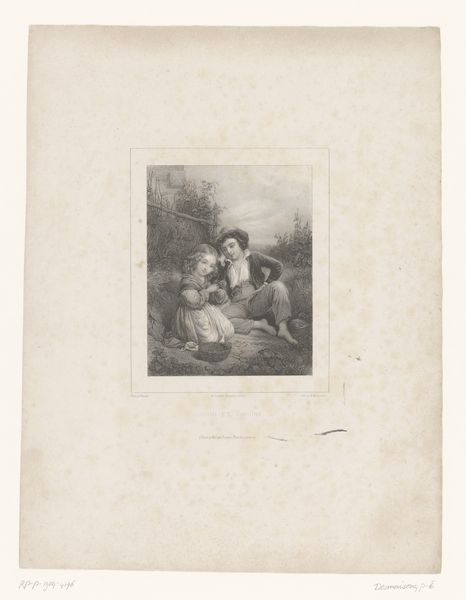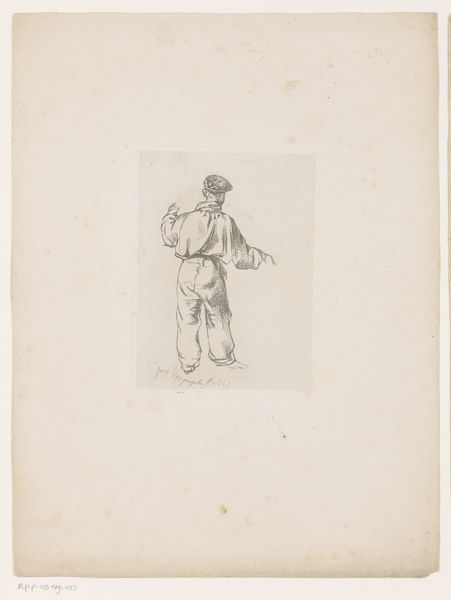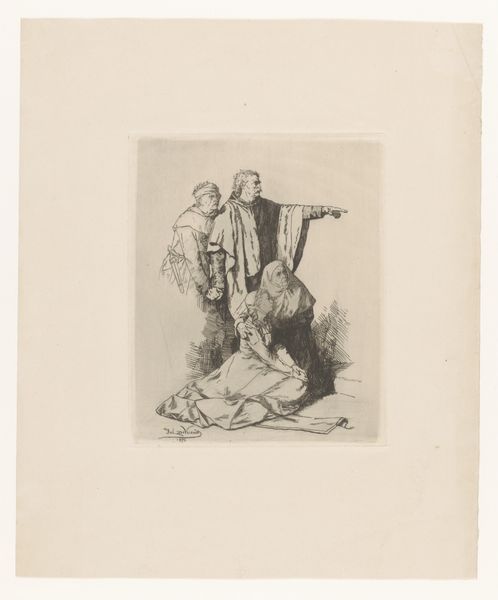
drawing, paper, pencil
#
portrait
#
drawing
#
pencil sketch
#
figuration
#
paper
#
pencil
#
genre-painting
#
realism
Dimensions: height 212 mm, width 165 mm
Copyright: Rijks Museum: Open Domain
Editor: This pencil drawing, “Standing Boy with Cap and a Seated Girl with a Basket on her Lap,” was created in 1843 by Jacques Van Gingelen. It feels… intimate, yet a little distant. What do you see in this piece? Curator: I see a preservation of a specific cultural memory. Notice the clothing - the boy’s cap and the girl's head covering - these aren't just garments. They whisper of social structures, perhaps religious affiliations. These elements hold weight in understanding 19th century rural life. Editor: So you're saying the clothes tell a story beyond just… fashion? Curator: Precisely! Clothing functions as a symbol, deeply interwoven with identity. What emotional associations do you have with the basket? How might it shape our reading of the girl’s identity? Editor: I hadn’t really considered the basket before. Maybe it signifies responsibility or labour? There's a simple kind of dignity there, perhaps? Curator: Dignity, yes. Their placement, too, speaks volumes. The boy stands tall, looking down almost melancholically, while the girl sits, grounded, and contained within the lines of the basket and her skirt. A subtle gender dynamic emerges, no? Do you find that the poses of the figures carry an additional psychological meaning to you? Editor: Definitely! It’s like she’s rooted to the spot, and he's…well, less so. This is far more complex than a simple sketch. Curator: Indeed. Art often functions as cultural memory, quietly preserving symbolic gestures and meanings across time. Editor: That makes me see the drawing in a completely different light. I’ll definitely be paying more attention to clothing in art from now on.
Comments
No comments
Be the first to comment and join the conversation on the ultimate creative platform.

